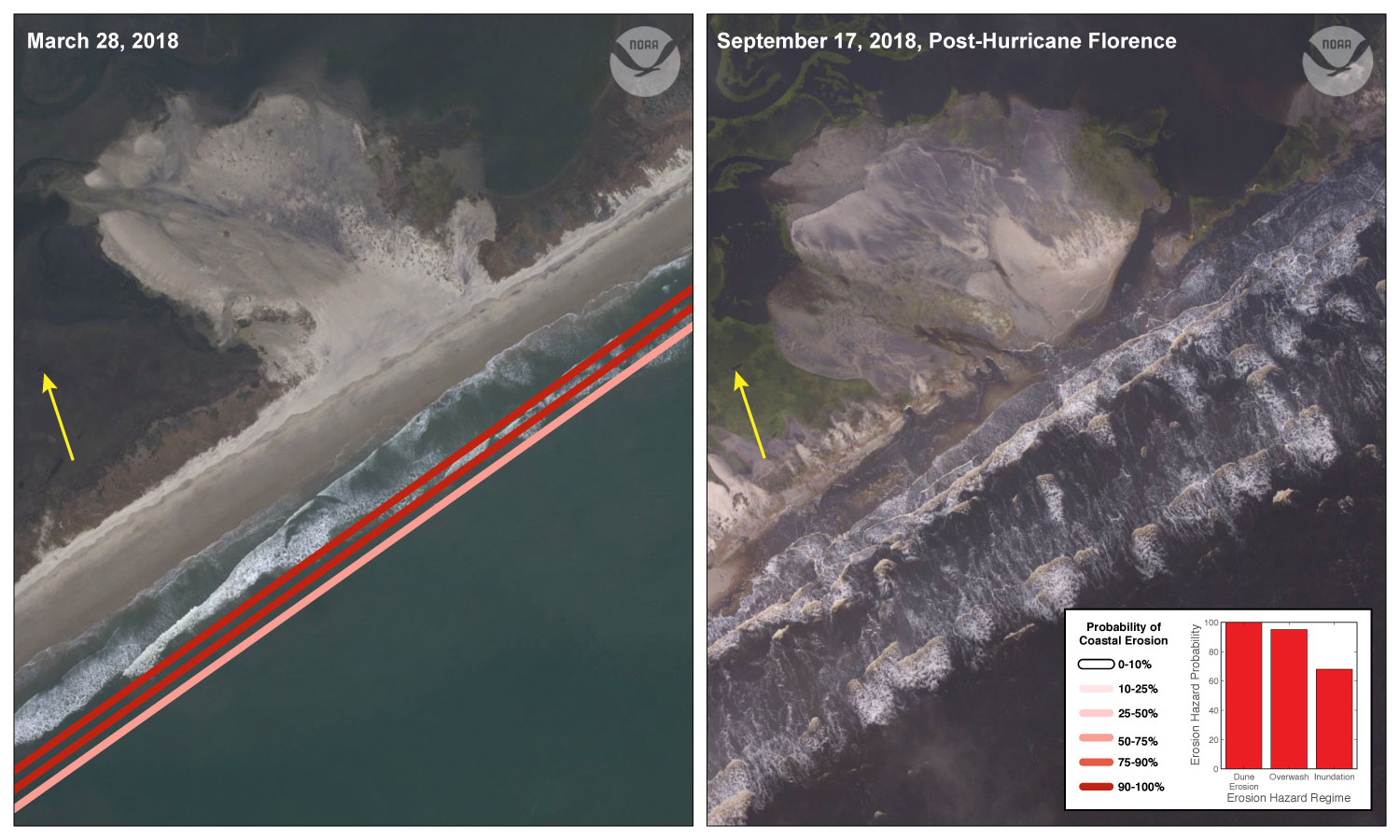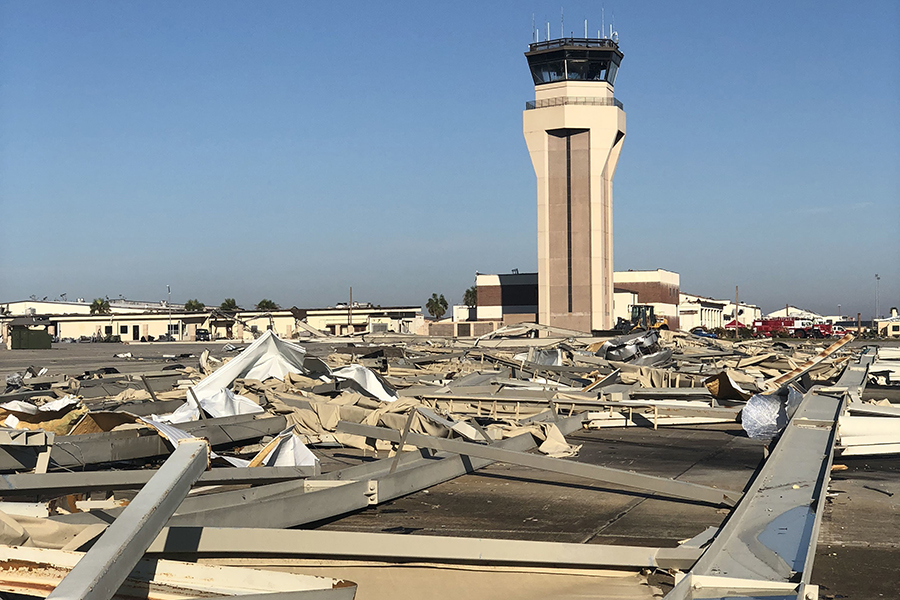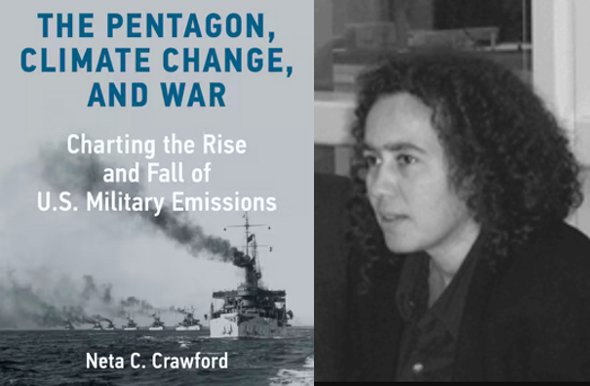Pentagon Militarizes Climate Change
The Pentagon, Climate Change, and War; Charting the Rise and Fall of U.S. Military Emissions, Neta C. Crawford, 2023
For most of the last 250 years humans have carried on with making “progress”–industrialization in the service of the good life—assuming that fossil fuels were an essential ingredient in shaping the world we were certain would be better than the one we were leaving behind. Our grand strategy for security took for granted that we would need fossil fuel for industry and fossil fuel for war. Only in the last fify years or so has it become clear that burning all that fuel and at the same time destroying the forests and the wetlands that take up the carbon released by the fire, is not just leaving the past behind, but destroying the possibility of preserving what is increasingly– in essential life giving respects—understood as a better world.
In sum, the economy, foreign policy beliefs, and military doctrine institutionalized greater demand for fossil fuels. The deep cycle of oil demand, consumption, militarization, and conflict begins with demand for oil and increasing consumption. Then, when U.S. policy makers feel anxious about guaranteeing oil supplies in the face of dependency, or are concerned about the price of oil, they back allies in the Persian Gulf and greater Middle East, as occurred in 1946 and 1949, in 1957. in 1973, in 1980 and 1990. The United States played favorites within the states that had large oil reserves, even if some of those government leaders were autocratic, such as the Shah of Iran, Saddam Hussein, and the leaders of Saudi Arabia.
Yet, the risk of supporting authoritarian regimes is that those regimes are increasingly unstable as the citizens who demand more say in their government push back against authoritarian kings, emirs, and shahs. When challenges to the undemocratic, autocratic or kleptocratic rulers within states with large oil supplies occurred, or there were external challenges, the United States sometimes backed the leaders or system that is thought could bring stability. Thus with the Eisenhower Doctrine, the United States backed Saudi Arabia’s King Saud and Crown prince Faisal as a way to balance against Egyptian leader Gamal Abdel Nasser. At times, as in the case of backing the Shah of Iran in the 1970s and Saddam Hussein in Iraq in the 1980s, these alliances backfired…This in turn increases the sense among U.S. Elites that the Middle East is a volatile region that needs U.S. Intervention to remain stable.
The military has understood the science and the consequences of global warming quite well for decades. They paid for much of that research. National security strategists have sounded muted alarms, the Pentagon has adapted some of their equipment and operations, and experts have imagined scenarios of increasingly dire complex emergencies and catastrophes and climate-caused wars.
Pentagon leaders have been farsighted and tactically flexible. Some of the smartest, best-trained and most determined people on the planet, given the resources of the richest nation on earth, the people at the Pentagon are trying to make things better…They have developed better batteries, put up solar arrays at bases, and even thought about moving some bases.

Camp Lejeune Hurricane Destruction 2018
Camp Lejeune (North Carolina) was hit by Hurricane Florence in September 2018 and suffered $3.6 billion worth of damages. In October 2018 , Michael, a category 5 hurricane devastated much of Tyndall Air Force Base in Florida, including F-22 aircraft, damaged beyond repair or destroying hundreds of buildings…Estimated to cost $4.9 billion to repair and reconstruct the base, the rebuilding was expected to last as long as five to seven years.

TYNDALL AIR FORCE BASE, Florida — Hangers once used to keep aircraft out of the elements now lie scattered across the flight line following Hurricane Michael on October 10, 2018. Hurricane Michael is the third largest hurricane to make landfall in the United States, reaching peak winds of 155 miles per hour.
Tyndall Hurricane 2018

And yet at the same time, the Pentagon has been strategically inflexible and blind…For the most part, the armed forces, and our political leaders, have not put away the tools and habits of mind that got us here in the first place. Our grand strategy for national security has not fundamentally changed. In some ways it can’t, because it is premised on the anticipation and fear of war—the idea that for us to be safe, we have to be prepared to meet every threat anywhere at any time with overwhelming force. The national security strategy is also premised on the idea that force works, that the threat of coercion and the actuality of destruction can get us what we want. So once we believe those things—that war is possible and may be imminent, that we must have a capacity to make war that far exceeds our enemy’s abilities, and that coercion and destruction are effective—it seems that the only way to deal with the threat of climate change-caused war is to prepare for more war. Of course, in preparing for more war, governments give the armed forces everything they need: money, weapons, people, bases, and fossil fuels. We defend and protect the oil we think we need to defend ourselves…At the same time that we are making our weapons more energy efficient and the installations more resilient, we scarcely question whether war is inevitable or in fact made more likely by our bases and our burning fuel to be the most powerful nation on earth…The military is inadvertently or perhaps deliberately militarizing climate change.
